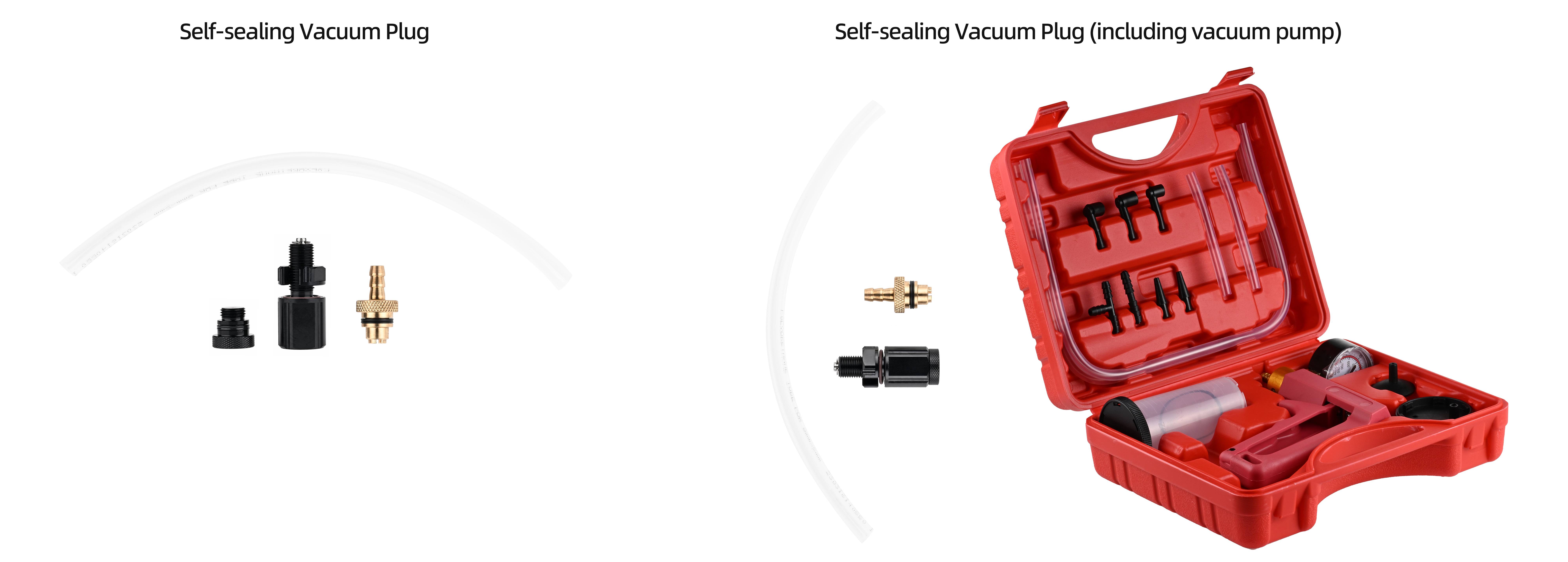Description
The self-sealing vacuum plug is used to create a vacuum inside the watertight enclosures, allowing for the detection of sealing. It can also remove humid air from the watertight enclosures via vacuuming, preventing condensation, and maintaining a controlled negative pressure to prevent flange detachment.
However, not all situations necessitate vacuuming the watertight enclosures, especially when there are components sensitive to air pressure inside. In such cases, you can opt for an Enclosure Vent to establish communication between the interior and exterior air.
The method of vacuum testing the watertight enclosure only assesses its airtightness, thus determining its watertightness. It does not indicate the enclosure's ability to withstand pressure, which still requires a hydraulic pressure test.

Shipping List
- 1 x Self-sealing Bulkhead
- 1 x Vacuum Plug
- 1 x Lock Cap
- 1 x Hose
- 1 x Manual Vacuum Pump (optional purchase)

Specifications
| Item | SKU | Material | Weight |
|---|---|---|---|
| Self-sealing Vacuum Plug | 15000203-0010 | Aluminum, Copper, Plastic | 45g |

*The left diagram shows the dimensions when installing the vacuum plug, while the right diagram illustrates the dimensions when installing the lock cap. Please note that the lock cap must be securely screwed on before the equipment is submerged to ensure waterproofing. Additionally, ensure that the O-ring is lubricated and inspect it for any impurities or scratches.
| SPEC | Vacuum Plug |
|---|---|
| Pressure Resistance Depth | 1000 meters / 3280 ft |
| Material | Copper |
| Hose Size | Inner Diameter: 5, Outer Diameter: 8 |
| O-ring Size | Ø12 x 1.5 |
| O-ring Material | FKM75 Brown Fluorine Rubber |

| Recommended Size | Vacuum Plug |
|---|---|
| Recommended Bulkhead Through Hole Size (A) | Ø10.1±0.1 / Threaded |
| Hatch Cover Thickness (B) | 13 |
| Surface Range (C) | 20 |

Guides
1. Install the self-sealing bulkhead onto the end cap.
2. Seal off the manual vacuum pump and check for any air leaks in the pump body.
3. Connect one end of the air hose to the manual vacuum pump and the other end to the copper plug.
4.
Insert the copper plug into the bulkhead and press the pump body multiple times until the plug does not detach due to the vacuum.
5. Continue pressing the vacuum pump until the reading reaches 15inHg and wait for a few minutes.
6. Check if the reading does not drop by more than 0.5inHg, indicating a good seal.
7. Remove the vacuum plug and screw on the lock cap.
FAQ
● Can it still be used if the contact surface of O-ring is accidentally scratched?
No, it cannot be used, as there is a risk of leakage.
● Whether to apply grease to O-rings every time?
Yes, applying lubricating grease has several benefits: it helps remove dust and impurities from O-rings during application, allows O-rings to adhere to the groove for easy assembly.
● Do I need to tighten the lock cap very tightly?
No, you don't need to tighten it very tightly. Simply ensure that the O-ring is fully inserted, and tighten it until it's flush to achieve a good seal.
● Why doesn't the vacuum plug have a latch?
When a certain level of vacuum is achieved, the vacuum plug will naturally stay in place and won't detach. Therefore, a latch is not necessary. Simply hold onto the plug during the initial pressing.
● If I can't remove the plug after creating a vacuum inside the watertight enclosure, how do I release the air?
You can release the air by pressing downward on the internal step.
● Should I use threadlocker on the nut?
It is recommended to use threadlocker because the lock cap is installed by rotation and may loosen over time.
● Will water enter if I don't install the lock cap?
You must install the lock cap to ensure waterproofing.
